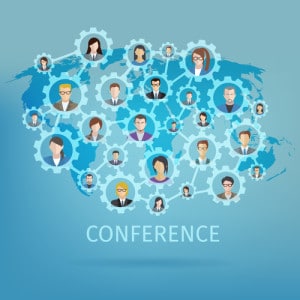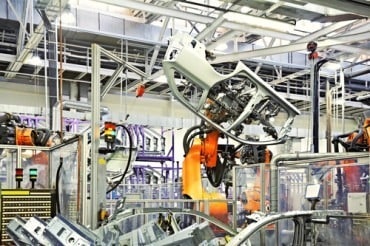
For their annual conferences, Oracle needed to choose an integrated, end-to-end people management solution from among hundreds of disparate Internet of Things (IoT) capabilities. This is how Oracle, working with partner Hitachi Consulting, solved the challenge of cost-effectively managing attendees by capturing insights and taking action in real-time.
Industry:
Event Management
Location:
San Francisco, Calif.
Business Opportunity or Challenge Encountered
If you have ever been involved with conference planning and management, you probably can understand why this is likely one of the most stressful set of tasks on the planet. All efforts come down to making sure large numbers of attendees (who have paid considerable money to attend) are properly guided to relevant sessions. You need to make sure that those sessions are properly situated, supported and staffed. You need to make sure all of the events and meals around the sessions go as planned. You also need to make sure that people are flowed to their destinations with as few traffic bottlenecks as possible.
This is hard enough for conferences with 300 attendees. Imagine what needs to go into an event with more than 60,000 attendees from over 122 countries. That’s the challenge faced for the managers of Oracle OpenWorld and JavaOne which, essentially, take over the entire downtown district of San Francisco every September.
These conjoined conferences bring technologists, customers and partners together for a week of educational and networking events centered at the Moscone Center in San Francisco. It requires diligent planning to manage all of the event logistics, including scheduling staff and transportation, and managing attendee wait times among an ever-changing agenda of over 2,500 educational sessions and 400 exhibitions from 475 partners. To successfully manage all of this also requires real-time insights into the actual behavior of people.
How This Business Opportunity or Challenge was Met
For Oracle and the Moscone Center, the challenge was how to define an integrated, end-to-end people management solution among hundreds of disparate Internet of Things (IoT) capabilities including badge sensors, kiosks and smartphones. Oracle, working with partner Hitachi Consulting, sought to help solve the challenge of cost-effectively managing attendees while improving their satisfaction by capturing insights and taking action in real-time.
The conference team implemented what it called the “IoT In-Motion” People Management solution in the Moscone Center to help event coordinators, staff and attendees manage the often unpredictable behavior of crowd flows. The solution required the close cooperation of five primary participants, each bringing a critical element of capability to the solution. Eric Bruno, who helped develop the IoT In-Motion system, explained how it all worked after the conference article. “Also known as ‘The People Counter,’ the IoT system included stereoscopic cameras that can detect shapes in three dimensions with movement,” Bruno said.
“The software working with these cameras is programmed to know the difference between a human being and, say, a dog or cat, and report only when people have walked by, including the direction they were headed. Placing these cameras at the entrances and exits to various places within the Moscone Center (such as the keynote lecture halls, event rooms and show floors), the traffic patterns of people could be analyzed as they walked in and out of these places.”
Hitachi Consulting led the planning, definition, architecture design, system integration, dashboard and analytics application development, and management of the solution implementation. Hitachi Communication Technologies America developed the standards-based, OSGi framework for the dynamic installation and execution of Java applications.
The Moscone Center provided event managers to work with Hitachi Consulting to ensure compliance with labor union and contracting guidelines. The convention and exhibition complex in San Francisco covers more than 2 million square feet of building area. Eurotech developed, supported and installed the People Counters, Multi-service Gateways and Device Management cloud hardware, as well as the embedded software and integrated machine-to-machine (M2M) platform components.
Hitachi Consulting used the Oracle Business Intelligence Foundation Suite and event processing to develop applications to aggregate and analyze real-time sensor data, with interactive dashboards on the Oracle Exalytics engineered system.
Measurable/Quantifiable and “Soft” Benefits from This Initiative
The results provided real-time and historical insights to help event staff manage logistics, wait times and crowd reactions to the agenda and speaker changes. The data came from analytical dashboards that provided current and historical insights to capacity, event draw, capacity compliance and service requirements.
Real-time information of occupancy and people flows related to agenda item, venue and time provided insights to speaker effectiveness, wait times and logistic requirements. Advanced visualizations of occupancy and traffic flow information in a building layout format provided insights into the general staff consumer of information. In addition, mobile device applications offered attendees real-time insights to crowd flows and wait times in each venue.
The system made it possible to analyze traffic patterns over time as well as registration line wait times, according to Bruno. As a result, Bruno said Oracle was able to see “in real-time and historically, when people arrived for certain events, when they left and, when correlated with the event schedule, draw conclusions as to why.”
For instance, Bruno said that once it was announced that Larry Ellison would not be able to make his presentation halfway through a keynote event, the IoT in Motion system reported just how much of an impact this news had on the room attendance. “More than half of the people walked out within a few minutes time,” Bruno said. “This reaction was observed in real-time by the system coordinators and drove home just how much value the analytics a system such as this (built almost entirely in Java end-to-end) could provide to event planners.”
Sources: Hitachi Consulting, Eric Bruno and Dr. Dobb’s Journal.
So many articles, so little time. Luckily, our content is edited for easy web reading! Read more:
Research from Gartner: Real-Time Analytics with the Internet of Things
From the Center to the Edge: The IoT Decentralizes Computing
Becoming an ‘Always On’ Smart Business
Urgency of Present and Past in IoT Analytics
Liked this article? Share it with your colleagues using the links below!





























